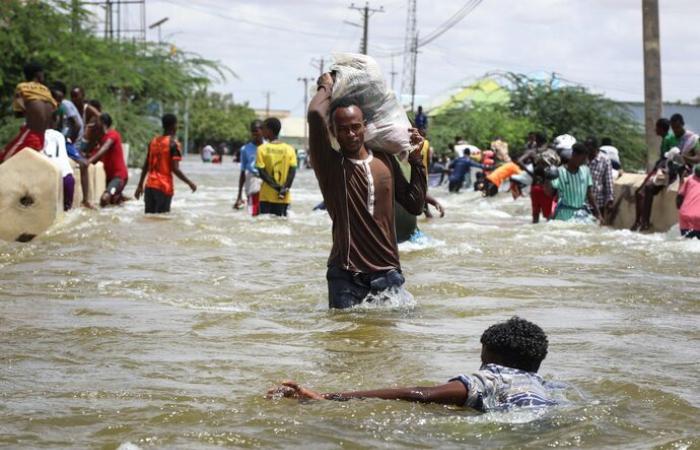
Somalia is on high alert as forecasts predict a significant El Niño event in the coming months, which could bring catastrophic flooding to the already vulnerable country. With memories of devastating floods still fresh, government authorities and humanitarian organizations are scrambling to prepare and mitigate the worst impacts.
El Niño is a periodic climate pattern caused by warming ocean temperatures in the equatorial Pacific. Its effects are felt globally, but especially in East Africa, where it tends to increase rainfall during the October to December wet season. This year, models indicate a high chance of a major El Niño, on par with the destructive 1997-98 event. Experts estimate a 90% probability that it will persist through the end of 2022.
For Somalia, the stakes are extremely high. The country is still reeling from a severe drought that destroyed crops and livestock and pushed communities to the brink of famine. Rivers and reservoirs remain low after multiple failed rainy seasons. An El Niño deluge now would overwhelm parched landscapes, particularly along the major Shabelle and Juba River basins.
According to the UN Food and Agriculture Organization’s (FAO) Somalia Water and Land Information Management unit, this year’s El Niño has the potential to trigger a 100-year flood event. In May 2022, intense Shabelle River flooding displaced some 245,000 people. A similar or greater event now could be catastrophic, causing extensive loss of life, livelihoods, homes, infrastructure, and access to basic services.
Early warning systems are another critical need. Humanitarian Agencies are working closely with government agencies and local partners to establish monitoring networks along the Shabelle and Juba rivers. Automated flood alerts will be disseminated via radio, SMS messages, and other channels. The aim is to give communities as much lead time as possible to move to safer ground. Evacuation planning is also underway in coordination with local authorities.
International aid groups have mobilized to support disaster mitigation efforts, but caution that available funding remains dangerously low. Resources only stretch so far when the problem is a nationwide climate emergency. Caught between extreme weather, chronic poverty and fragile governance, rural Somalis find themselves trapped in a cycle of deepening vulnerability. Each shock leaves them less able to cope with the next.
Somalia today stands on the precipice of catastrophe. The country’s climate crisis demands urgent international action to build community resilience and fund lifesaving aid. But as the skies darken and rivers swell, time is running short